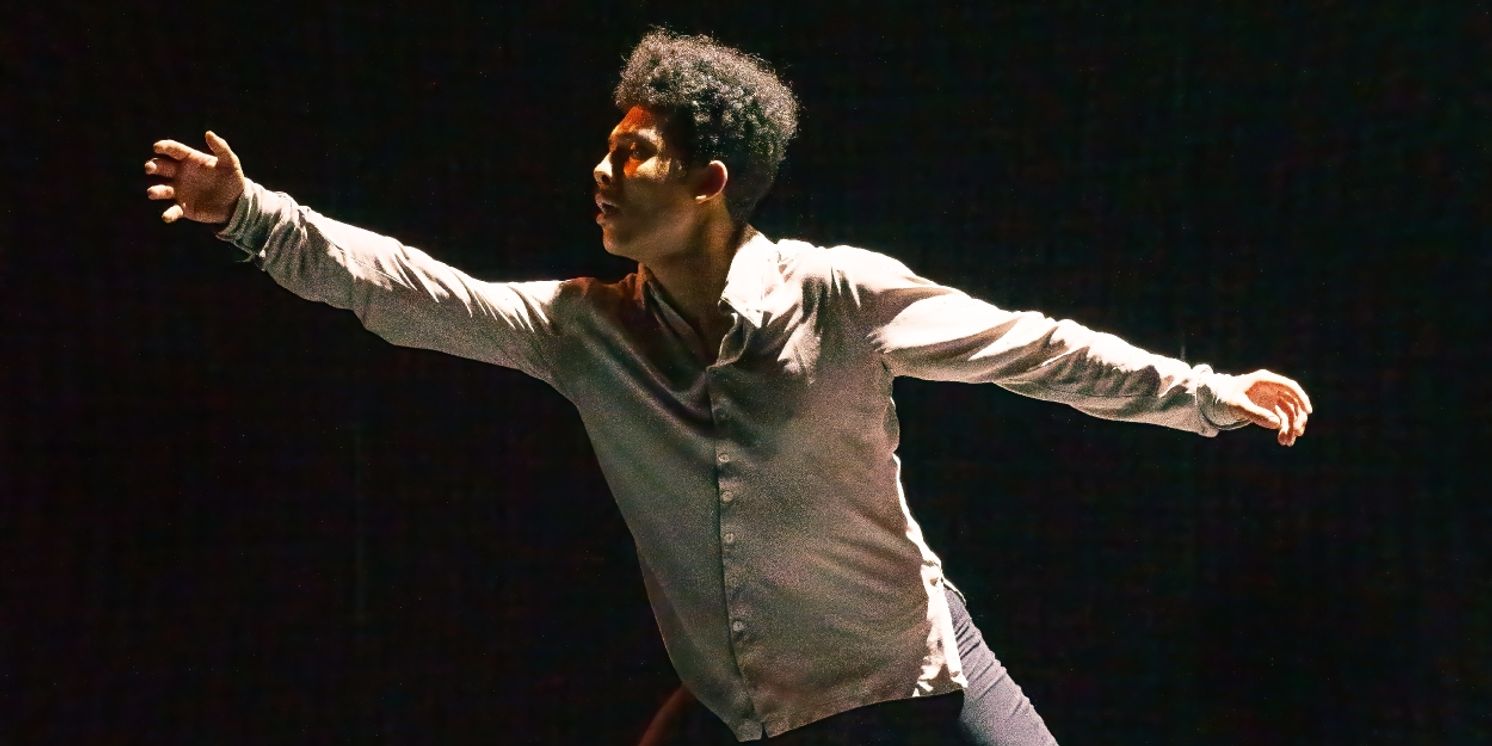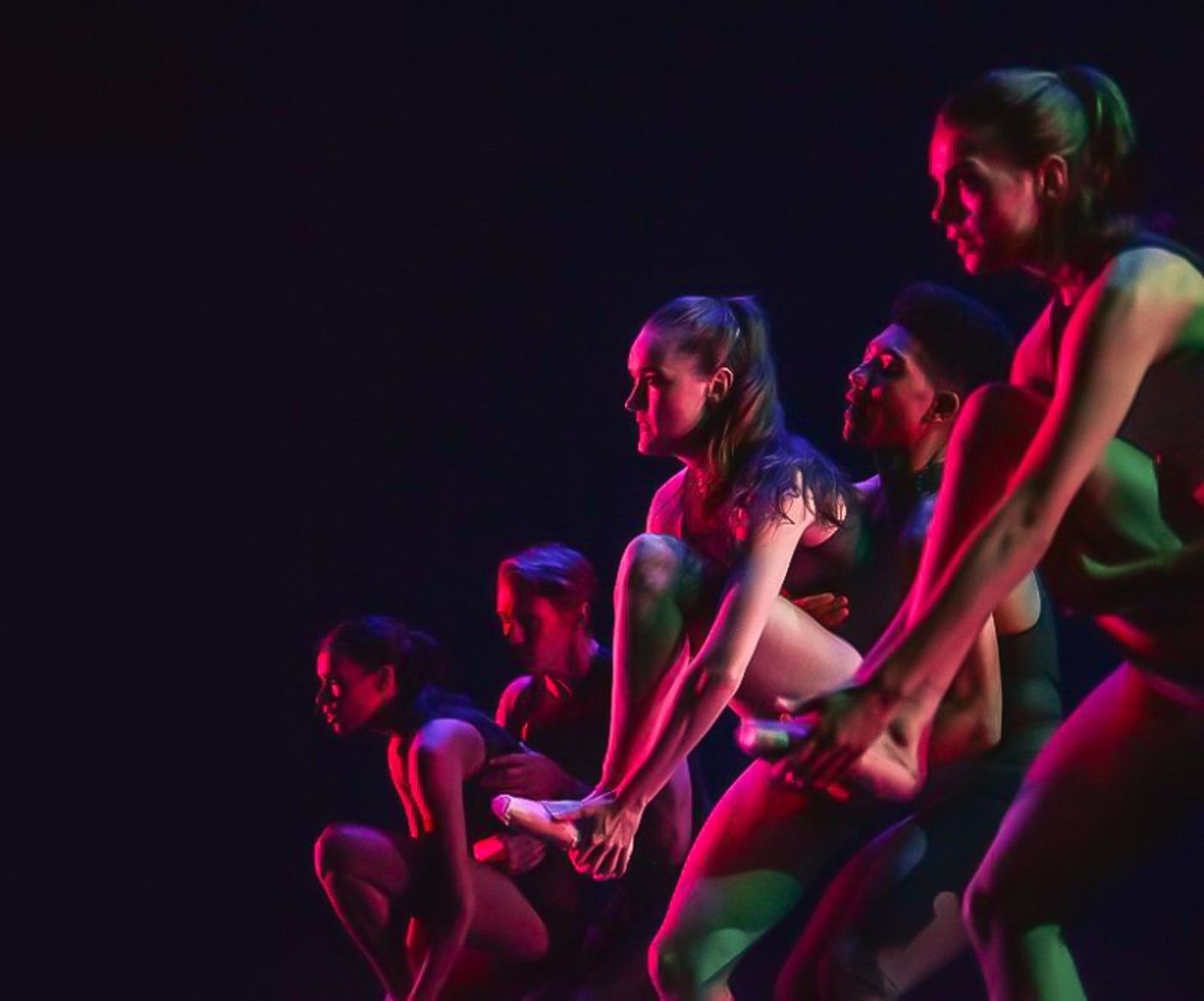Review: FALL WORKS at Charlotte Ballet
Charlotte Ballet Roars into a New Era With FALL WORKS

Knight Theater should have been abuzz last Friday night. Yet somehow, a year after Charlotte Ballet's 50th-anniversary celebration - celebrated a year after the company's actual 50th anniversary - my own excitement wasn't reflected by the community at large. A night after Opera Carolina opened its 2022-23 season at Belk Theater to an empty upper balcony and a disappointing crowd, the curtain went up on Ballet's new era with a similarly sparse turnout.
It can be disheartening for performers to see the curtain rise on a hall pocked with vacant seats, but the effect seemed more noticeable on the soloists singing Tosca than on the dancers bringing us FALL WORKS. Understandable. Charlotte Ballet is a more resident company, devoid of prima donnas who swoop into town for one rehearsal and one weekend, they've worked hard perfecting their moves at their own studio, and nearly 40% of them have been in the company for less than two years.

They can be as excited to be working with new comrades and new partners as we are to see the diverse new faces. Implacable prerecorded music - synced to crucial interactions with other corps members - keeps them in step, and they don't need to worry whether their voices will betray their nerves. Or hold up through Act III.
We can question the wisdom of reprising two works that premiered here within the past three years. Both Helen Pickett's IN Cognito and Crystal Pite's A Picture of You are fascinating, edgy pieces, neither one saddled with music we might readily recall months or years afterward. Although the choreographies jogged my memory, the freshness of the experiences was enhanced by watching different dancers perform them, especially after missing opening night to attend the opera.
Instead, we could take consolation in getting the local premiere of Under the Lights by Christopher Stuart, the director of Charlotte Ballet II. After the heaviness and intensity before intermission, Stuart's medley, set to nine tunes by Johnny Cash and June Carter Cash, was a light and lively chaser. A couple of dancers from Ballet II occasionally infiltrated the frontliners in this entertaining suite, adding their youth to the bustle and effervescence onstage.

Similar incursions occurred over the course of Pickett's IN Cognito, which proved to be the most free-flowing work of the evening, hardest to follow, and by far the easiest to forget. As a result, the impact for me was almost as fresh as Stuart's piece, a good thing, and I didn't find myself comparing the dancers of 2022 with those who gave the world premiere performance in 2019. Only one of the nine I saw on Friday had danced it two years ago. I hardly ever knew what was coming next, but when it came, it usually struck me as familiar - and the flow of the piece seemed far more organic this time.
So much was going on with the dancers, in multitudinous permutations moving hither and thither, that I often lost track of the props and furnishings whisked onto the stage and then off to the wings. One of the two table lamps would suddenly be missing, lounge chairs might multiply while the sofa exited, or a quartet of mismatched chandeliers might arrive randomly from the fly loft without reason. The dancer hiding behind the shrub - incognito? - would exit elaborately, crossing the entire upstage to the opposite, making herself absurd.
Dancers communicated and coordinated. They partnered, interacted, and created beauty together. Yet they never connected, perhaps incognito to each other and to everyone else. Busy and beautifully baffling, very much like the modern world.

A Picture of You Falling, with choreographer Pite also supplying the biting prerecorded text, was edgier, more satirically impersonal. At times catatonically repetitive, this strange pas de deux imprints itself readily and deeply - an almost sinful delight, since it lays bare the careless ways we talk about love and romance. Sarah Lapointe and Ben Ingel first connect by accidentally bumping into one another. We're speaking literally here, as they walk in opposite across a geometrical space outlined at regular intervals by strobe lights.
When Ingel falls, he literally falls, and his heart literally hits the floor when he is smitten and when the makeshift couple breaks apart. Unlike the score that Pickett cobbled together to move and regulate her dancers, the original music by Owen Belton never seems to register as a pulse or an emotional coloring, particularly when Pite tells us "This is the place" and "This is how it happens" - over and over.
What lighting designer Robert Sondergaard creates with his symmetrical formation of strobes is emphatically not a space. Nor can we be sure whether Pite is telling us again and again and again that this is how this ephemeral intimacy happens or whether - in some kind of condensed or looping timeframe - it's actually happening again and again. Focus shifts from Ingel to Lapointe in the moments of intimacy leading to the breakup, but this is ultimately the man's story. Or a picture of what men have made out of love.

We confronted a couple of filters between ourselves and the music of the Cashes in Under the Lights. The least discordant of these was Stuart's choreography, which briefly stumbled with his blithe setting for "Folsom Prison Blues," when his five men carried on merrily during the vocalist's confession that he "shot a man in Reno just to watch him die," a jarring disconnect. More problematic were the recordings of The Man in Black's signature songs by Sugar + the Hi-Lows, most egregiously lightweight when they missed the gravitas and drama of "Hurt," leaving Nadine Barton little to work with, though she worked it well.
James Kopecky got us off to a charismatic start with "Walk the Line" as it dawned on us what we would have to cope with from the Bi-Los. Anyone who had heard a definitive rendition of "Ring of Fire" or "Jackson" could empathize with the struggles Stuart faced, but Sarah Hayes Harkins didn't flinch at all as she joined Kopecky for the coolish "Fire," and a couple of winsome couples, Isabella Bertolotti with Humberto Ramazzina and Meredith Hwang with Oliver Oguma, redeemed the Mississippi superficiality.
Sugar plus or minus the Hi-Lows was hard for me to swallow, which may account for my liking Stuart's settings best for songs I was least familiar with. "Two Day High" offered us three dynamic duos, Isabella Franco with Maurice Mouzon Jr., Shaina Wire with Luke Csordas, and Olivia Parsons with Juan Castellanos. With "I've Got You Covered," we got a glimpse of Amelia Sturt-Dilly partnered with Kopecky, just one night after she danced A Picture of You, the CharBallet commission she premiered a year ago. Stuart's best pas de deux by far.
"Tennessee Quick" was the most attractive track I heard from Sugar +, complemented by some really rousing ensemble work from Stuart and a swarm of 14 dancers. Couldn't imagine Johnny singing that one. That harmonious taste of "Tennessee" was a perfect setup for Stuart's stomping ensemble finale, "God's Gonna Cut You Down," fronted by Kopecky, the hardest-working man in Charlotte that night. Johnny didn't get to that golden nugget until late in his career, so it wasn't among his best recordings, but to hear the Hi-Lows attacking that traditional come-to-Jesus song with an electric guitar was almost as much of a kick as Kopecky and his backups.
Photos by Taylor Jones and Kim Kenney
Reader Reviews
Videos

